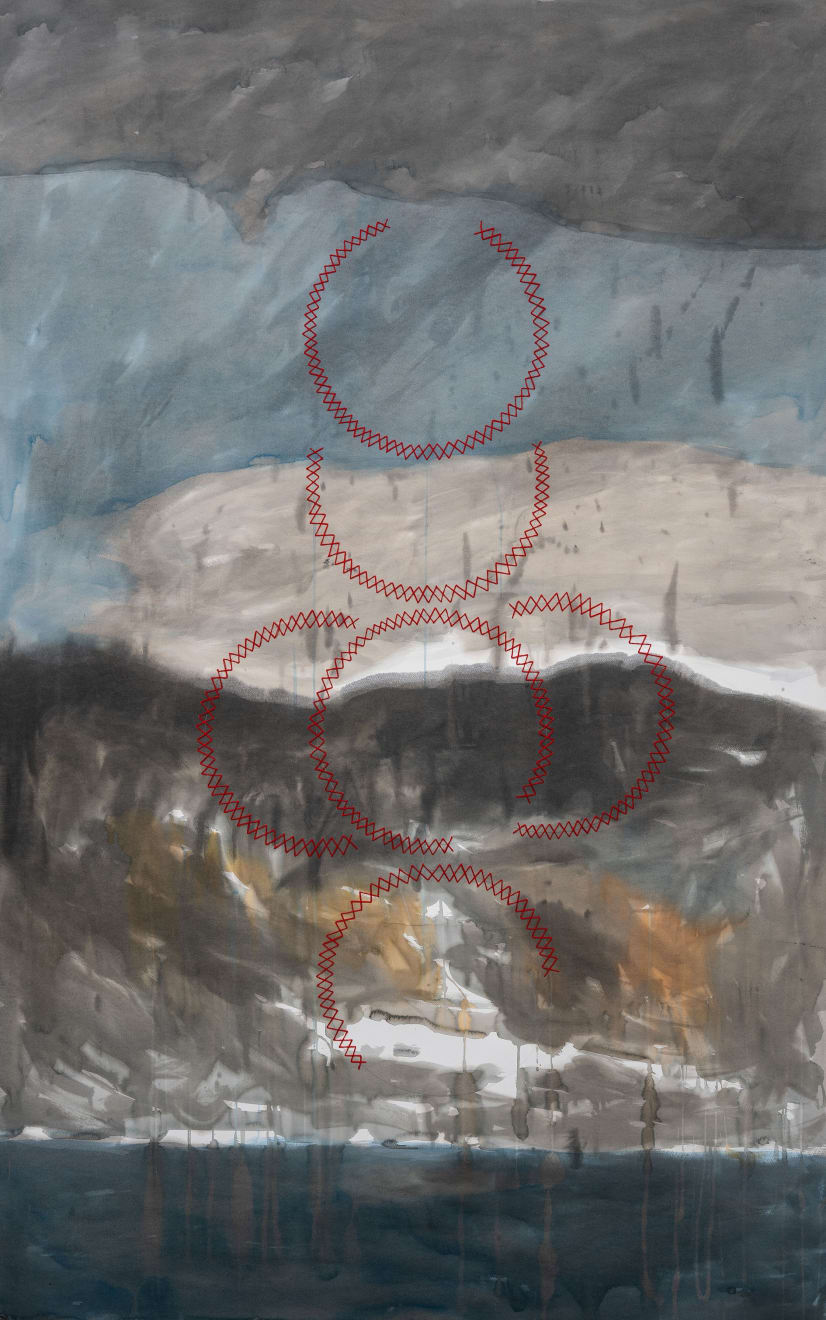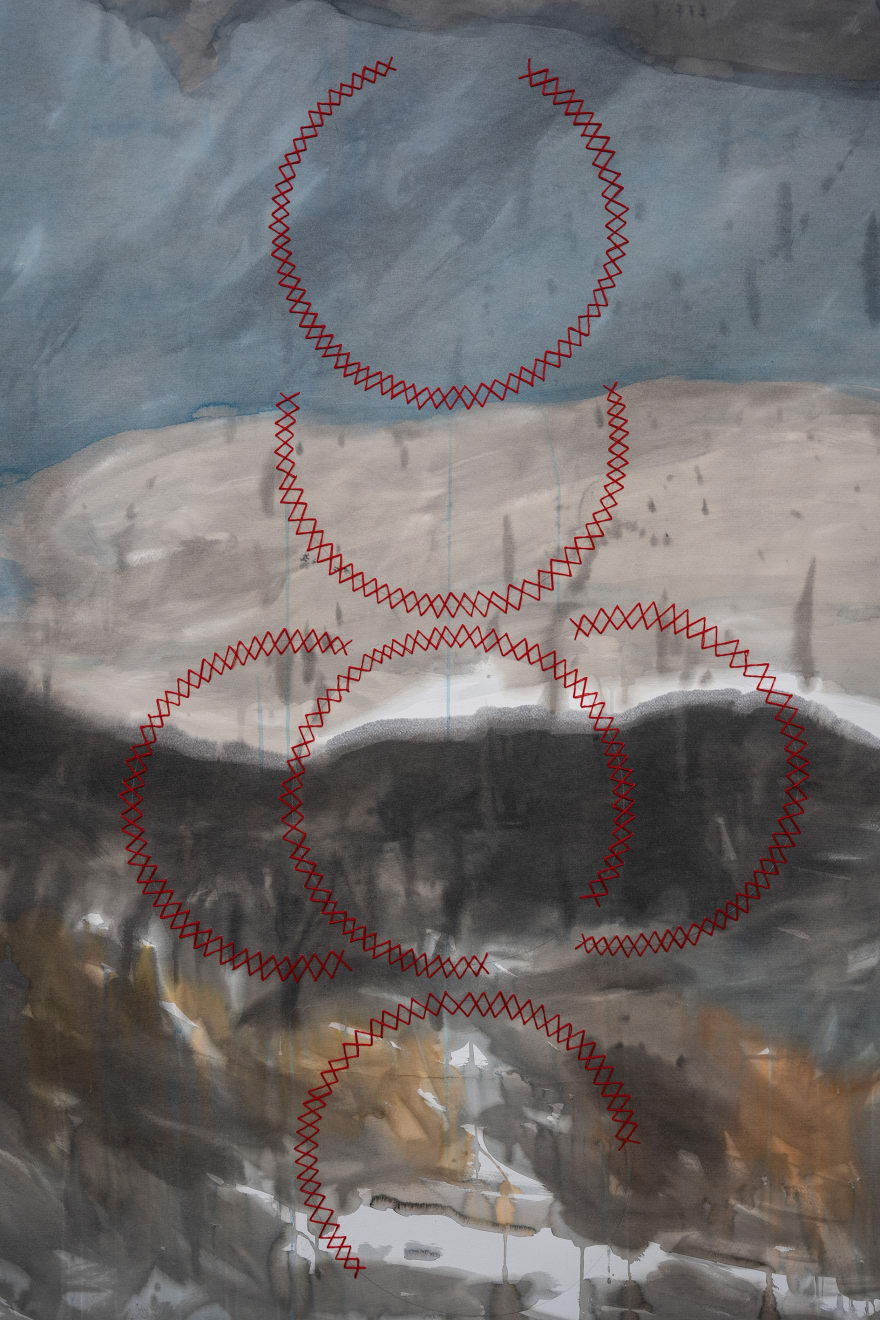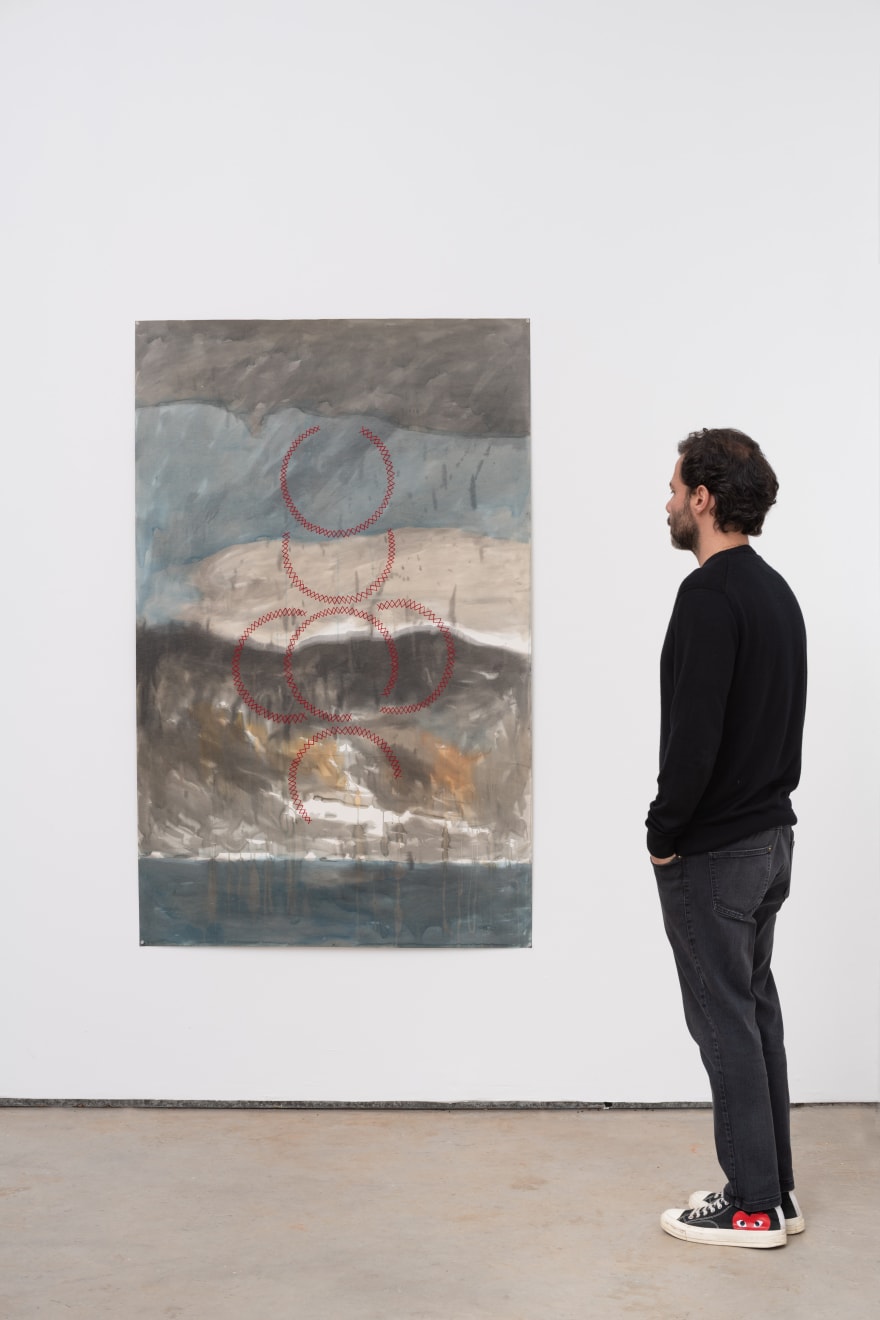-
Manuel Chavajay
Sem título | Untitled, 2023óleo queimado de motor marítimo e terrestre, aquarela e bordado sobre papel algodão
sea and land engine burnt oil, watercolor and embroidery on cotton paper170 x 107 cm | 66.93 x 42.13 inFurther images
O conceito de pertencimento está profundamente enraizado nas pinturas a óleo de Manuel Chavajay, que retratam diferentes momentos das paisagens do Lago Atitlán (Guatemala) vistas de sua casa, o lugar...O conceito de pertencimento está profundamente enraizado nas pinturas a óleo de Manuel Chavajay, que retratam diferentes momentos das paisagens do Lago Atitlán (Guatemala) vistas de sua casa, o lugar onde ele nasceu, cresceu e vive até hoje com sua esposa e filhos.Os diferentes climas, amanheceres e entardeceres retratam sua própria experiência de admiração e conexão com a natureza de seu lugar. O uso de óleo de motor queimado como meio para produzir as imagens é uma crítica ao extrativismo do material, ao mesmo tempo em que é uma metáfora para o sangue da mãe terra.Quando Herman Hesse fala sobre contemplação parece representar a visão de Chavajay, quando diz: "Contemplo e experimento o mundo vivo: borboletas e mariposas, besouros, nuvens, rios e montanhas, pois, enquanto vagueio pelo caminho do deslumbramento, escapo brevemente do mundo da separação e entro no mundo da união".El concepto de pertenecia está profundamente arraigado a las pinturas de aceite de Manuel Chavajay, que retratan diferentes momentos de paisajes del lago Atitlán vistos desde su casa, lugar donde nació , creció y vive hasta hoy junto a su mujer e hijos.
Los distintos climas, amaneceres y atardeceres retratan su propia experiencia de admiración y conexión con la naturaleza de su lugar. La utilización del aceite quemado de motor como medio para producir las imágenes es una crítica al extractivísmo de este material al mismo tiempo que es una metáfora de la sangre de la madre tierra, de donde este es extraído.
Cuando Herman Hesse habla sobre la contemplación, parece representar la visión de Chavajay, cuando dice “Contemplo y experimento el mundo viviente: mariposas y polillas, escarabajos, nubes, ríos y montañas, porque mientras deambulo por el camino del asombro, escapo brevemente del mundo de la separación y entro en el mundo de la unidad."
The concept of belonging is deeply rooted in Manuel Chavajay’s oil paintings, which portray various moments of the landscapes of Lake Atitlán as seen from his house, where he was born, grew up and still lives today with his wife and children.
The different kinds of weather, the sunrises and sunsets portray his own experience of admiration and connection with the nature of his place. He uses burnt motor oil to produce the images, not only to criticize the rampant extraction of this resource, but also as a metaphor for the blood of Mother Earth.
It seems that Chavajay’s view is echoed by Herman Hesse as the latter writes about contemplation: “I behold and experience as the living world: butterflies and moths, beetles, clouds, rivers and mountains, because while wandering down the path of wonder, I briefly escape the world of separation and enter the world of unity.”





